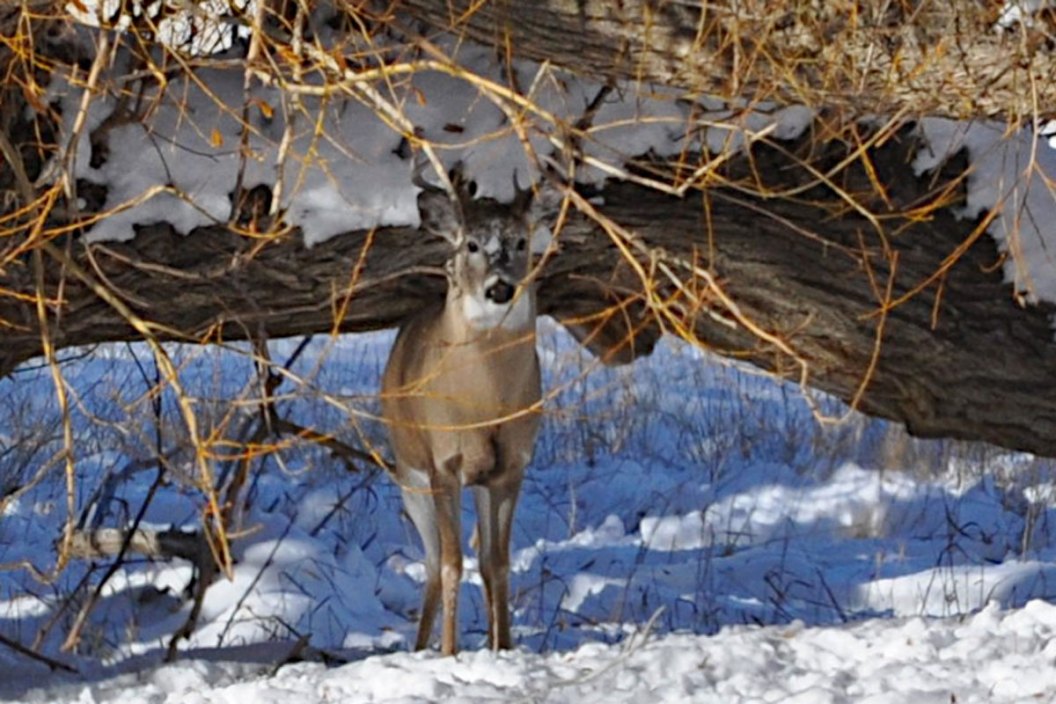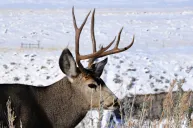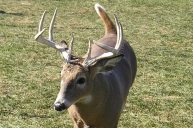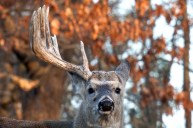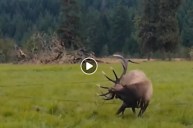What do deer eat in the winter? And how do they survive?
You would be surprised at how many people don't know the answer to this question. It really is hard to believe the harsh winter weather many deer survive each year when food sources are covered under a blanket of snow.
When these deep snows come, a deer's instincts kick into winter survival mode and their actions become predictable for the most part.
Here is exactly what deer and similar ungulates like elk and moose do to survive the cold weather every season.
What do deer eat in winter?
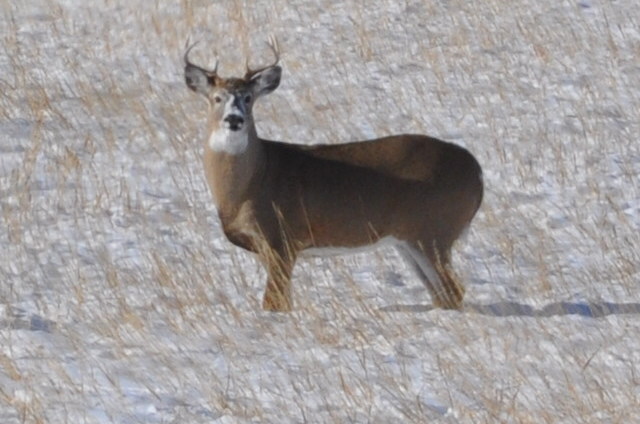
Travis Smola
This might surprise some people to hear, but their winter food consists of just about anything they can find. In deer yards in many northern states, the animals will paw at the ground with their hooves to get to the grasses below. They do the same in many food plots and agricultural areas across the United States and Canada.
Obviously, digging for browse is not an ideal scenario because digging burns calories and cuts into the fat reserves many deer have spent the summer and fall building. It can be especially difficult for bucks who often burn these fat stores off during the rut while seeking mates and fighting rivals. They eat seldom during this time, so once the rut is over, they have to gorge quickly in order to survive.
If deer are in a more natural, big woods area without access to leftover human crops or grassy areas, deer sometimes dig for leftover acorns, but they will eat whatever they can find. They'll eat dry grasses, but they'll also eat trees. They'll eat sticks, twigs and they'll even peel the bark right off trees at times. In western states where trees are few and far between, mule deer and whitetailed-deer will often browse on sagebrush when conditions become tough.
In agricultural areas, deer will eat leftover corn, soybeans and more. They love to hang around orchards and pick through whatever fruit the farmers have left behind.
In urban areas, deer browse on the plants in people's yards. I've had them come right up to my front window to eat the bushes beneath it. They'll also clean out your planter of the dead flowers from this past summer if you haven't already removed them.
It is usually obvious where the food is in winter because the deer herd or "yard up." That is, they congregate on some of the few food sources available. This means you'll often see dozens of deer congregated on one spot. It's because there is something to eat there!
Where do deer go in the winter?
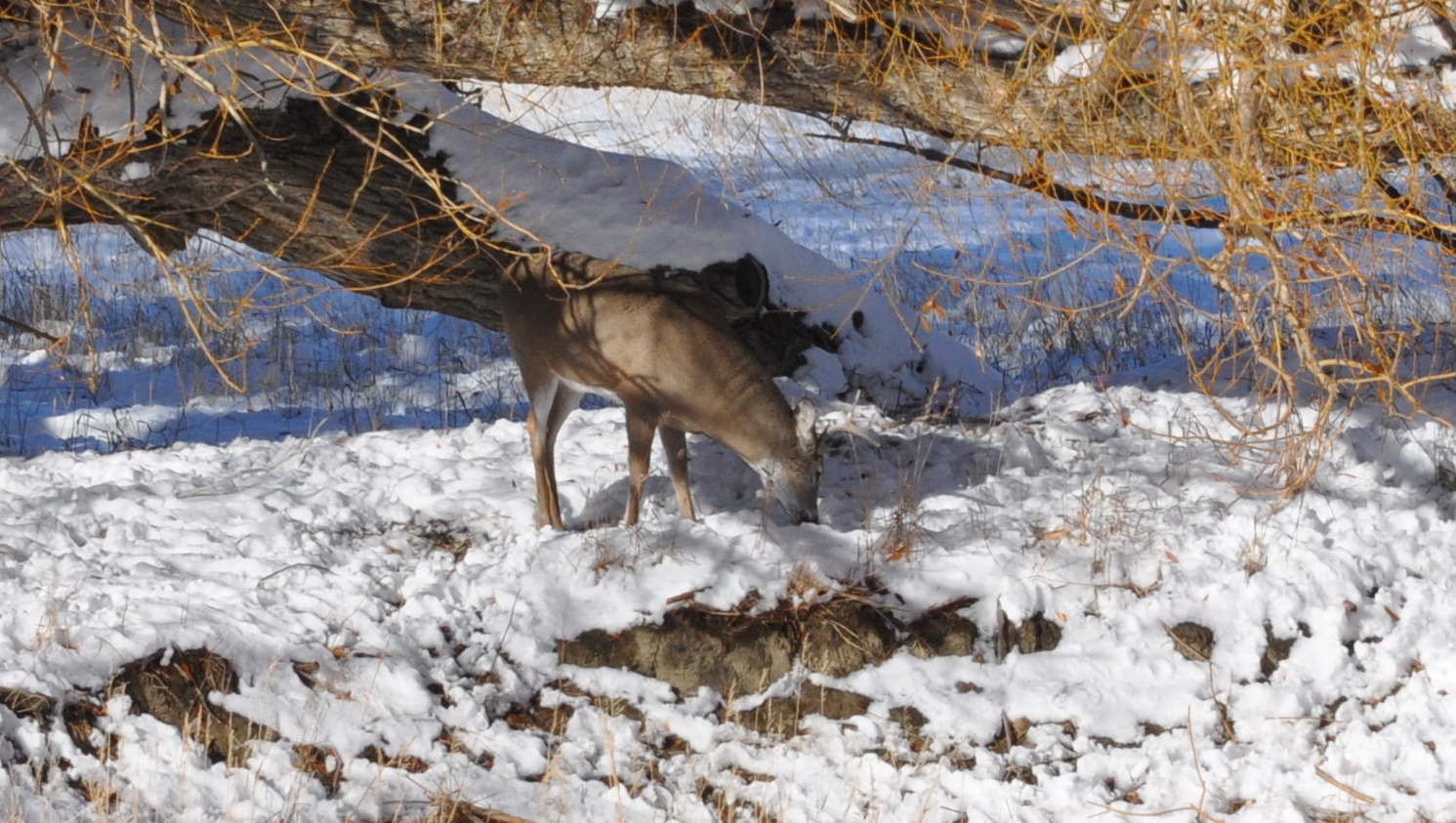
Travis Smola
This is probably the most popular question right after "What do deer eat in the winter?" The deer don't wander very far away from their food. Feeding deer want to expend as little energy as possible to avoid cutting into those fat reserves we talked about earlier.
Often, deer will bed down as close as possible to a good food source, or anywhere that has enough cover to hide them from predators.
Deer love coniferous trees this time of year because it gives a type of thermal cover from the wind. If they can find some thick, brushy pine trees or other conifers close to a beanfield or orchard, that's even better.
One ideal scenario for many deer is an unpicked corn field because it gives winter deer everything they need: Food, shelter and cover. They can preserve more of their body weight because they aren't expending it searching for food in cold temperatures.
If they can't find any of these options, deer will bed wherever they have cover from the wind. South facing slopes are often popular with deer because they cut out the wind during the long winter months while giving the animals maximum exposure to the warmth of the sun if it breaks through the clouds.
In some urban areas, it isn't uncommon for deer to use buildings and other man-made features as wind breaks.
How do deer stay warm in the winter?
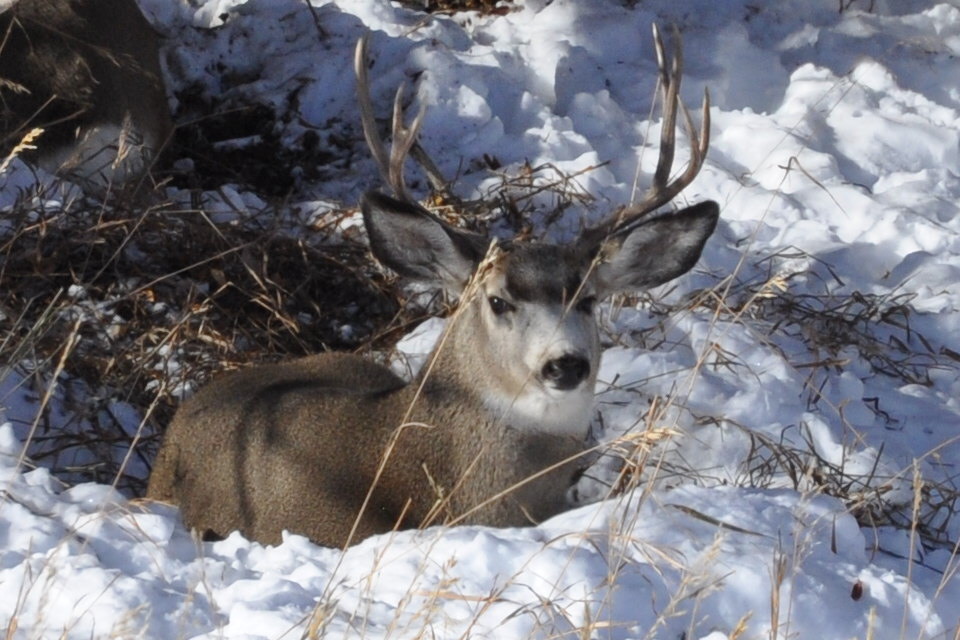
Travis Smola
Stepping outside into frigid conditions this time of year, it's hard to imagine anything can survive in them. But humans aren't built for the winter like deer are.
Deer, elk and moose go through several coat changes over the course of a year. The summer coat obviously keeps them cool during the hot months of summer while the winter coat is thicker. They also develop an undercoat during this time of year, which helps to trap in more body heat.
But it's not just a deer's winter coat that plays a factor. Converting food into energy also helps deer stay warm during the winter. It's why you'll see deer in the same places consistently in winter, sometimes for hours at a time during the winter months.
While they are feeding, they are bolstering those vital body fat stores that get them through the hard times.
How do deer survive in winter?

Travis Smola
Deer, elk, and moose survive severe winters in the far north simply though Mother Nature's great design.
It's a combination of winter coats, survival instincts and the adaptive ability to forage on just about anything when the going gets rough.
A deer's body is perfectly designed to react to their situation. For instance, in the winter a buck's antlers become useless once breeding season is over. That's why their body sends a signal to the pedicles of their antlers to release them in late winter. Once the buck sheds those antlers, the nutrients that went to supporting them can be spread to other areas of the deer's body.
Deer do have it rough in the winter, but that's just part of their nature. When you see them yarding up in their usual wintering areas the next few months, just know that means they are doing everything they can to survive. Some will make it, some will not. That's just the cruel reality of nature. But there will always be some deer that will make it through to next season to ensure the species goes on.
For more outdoor content from Travis Smola, be sure to follow him on Twitter and check out his Geocaching and Outdoors with Travis Youtube channels.
NEXT: WHAT'S THE BEST RIFLE CALIBER FOR DEER?
WATCH
